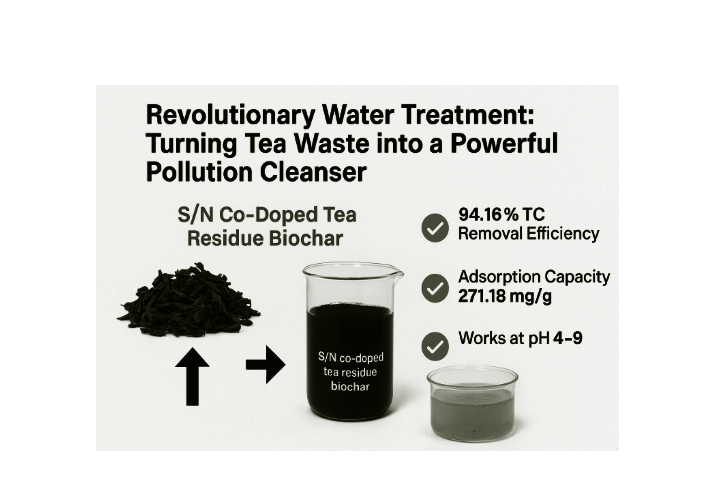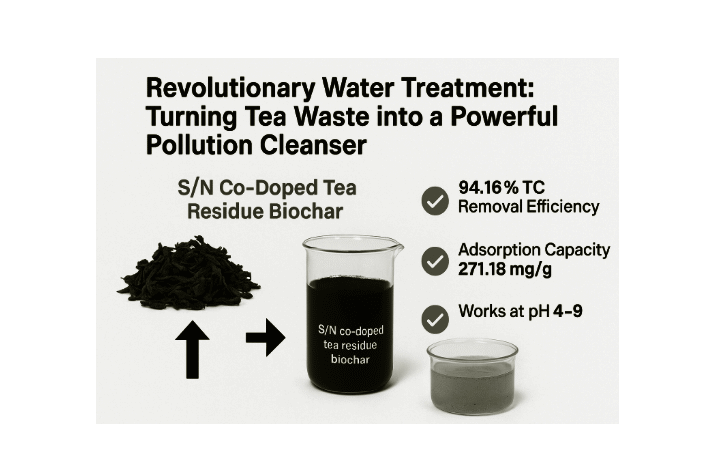Learn how researchers used S/N co-doping technology and sustainable hydrothermal methods to turn tea residue into a potent adsorbent that can remove tetracycline from water

🧪 Overview: Water Containing Antibiotics A Silent Crisis Because tetracycline (TC), a common antibiotic, is used excessively in human and livestock medicine, it is commonly found in water. It damages aquatic ecosystems and encourages antibiotic resistance. TC cannot be completely eliminated by conventional wastewater treatment techniques. However, researchers have now used leftover tea leaves to create a creative, environmentally friendly solution.
🍃 The Innovation: Tea Residue Biochar By using hydrothermal carbonisation, researchers from Beijing Technology and Business University produced sulphur and nitrogen co-doped tea residue biochar (SNBC). This inexpensive, environmentally friendly method improves the structure of the biochar for pollutant adsorption while making use of tea waste, which is plentiful in China.
🔬 Notable Features:
- 94.16% TC removal efficiency at 25°C within 10 hours
- 271.18 mg/g adsorption capacity, outperforming many other biochars
- Works effectively at pH 4–9
- Employs π-π interactions, hydrogen bonding, and pore filling for adsorption
🛠️ How It Works: Doping for Performance
Tea leaves naturally contain nitrogen. By doping with sodium thiosulfate (Na₂S₂O₃·5H₂O), sulfur atoms are introduced. This S/N co-doping enhances:
- Porosity and specific surface area
- Functional groups for interaction with pollutants
- Chemical stability for long-term use
Results That Matter
Compared with regular (unmodified) biochar, SNBC:
- Has 2.5x higher surface area
- Offers up to 9.38 times greater TC adsorption
- Shows monolayer adsorption behavior, confirming stability and reliability
🌍 Environmental & Practical Implications
This method not only tackles antibiotic pollution but also upcycles tea waste a food chain byproduct. It aligns with circular economy goals and offers a scalable approach for rural and industrial water treatment.
📚 Reference: https://doi.org/10.1016/j.jenvman.2024.121601
